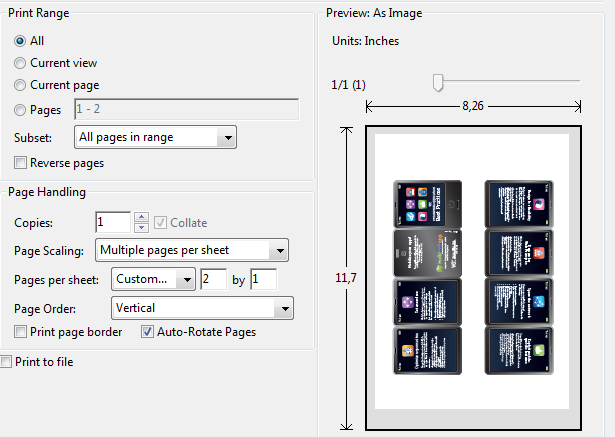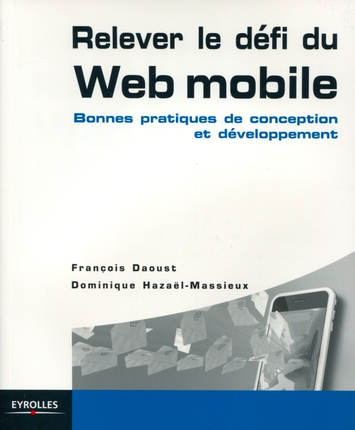As part of our work on the MobiWebApp project, we are to build a standardization roadmap, taking into account the needs from the market, and more specifically from SMEs.
While we have several ongoing actions toward that goal, we are also proposing to conduct simple interviews from SMEs that are using or are considering to use Web technologies to develop and deploy their mobile applications.
We are starting this series with an interview of Manrique Lopez de la Fuente who is a passionate advocate of Web technologies in the company he works for, Andago.
Hello Manrique, could you describe quickly your company and its business in general?
Andago is a 15 years old SME company, that was born as an IT Consultancy Services company focused on Public Administrations as customers. From the early days we have been using and promoting the use of Open Source and Open Standards as key factor for innovation and interoperability. Lately we have been moving our business model to one the let others to integrate their services in our platforms. We are building Web based platforms that would let anyone to have access to different kind of services (Governance, Health and Well-being, Tourism, Green ICT, etc.) from anywhere using a Web browser (PC, mobile device, TV, car, etc.).
How have you been using Web technologies as part of your deployment of mobile applications?
The Web has become the platform where all the services (public and private ones) live, so we have moved from local and native applications development to distributed and cloud based services integration platforms, and always using the Web as interface with the user. On the other hand, more and more people is using mobile connectivity to access these services, so we must have in mind that our services should be available in many devices, not just PC or laptops.
Any specific examples you can share with us?
One of the main sectors where Andago is currently working is mHealth solutions, specially as an active members of Continua Health Alliance. Continua Health Alliance is a non-profit, open industry organization of healthcare and technology companies joining together in collaboration to improve the quality of personal healthcare. With more than 230 member companies around the world, Continua is dedicated to establishing a system of interoperable personal connected health solutions with the knowledge that extending those solutions into the home fosters independence, empowers individuals and provides the opportunity for truly personalized health and wellness management.
As part of of our R&D activities, we have implemented IEEE 11073 standards for wireless communication (Bluetooth) with medical devices (weight scales, glucosemeters, etc.), so we can get devices measures using standard mobile phones. On the other side, this data has to be sent to a Personal Health Record (PHR) provider using some standard web services definitions. So, thinking about how to create an app for the whole E2E solution, we found more interesting using a mobile web application, because, we could use it on any mobile phone. Our focus is giving universal access to health and well-being services to anyone, without mattering which device they are using.
The app connects over internet with our health and well-being platform, and it exchanges and syncs measures, appointments, contacts, etc. So, we have involved W3C recommendations in several ways:
- We have implemented W3C Calendar API in Android (we are currently working on the W3C Contacts API and W3C Camera API) to integrate synched data with the calendar events on the mobile phone.
- We have defined a Web API for getting measures from IEEE 11073 compliant devices, and we have implemented it on a modified Web browser for Android. It is based on, and extends, W3C Sensors API. One of the nice things about this is that we have found another company doing similar things in another open mobile platform, so we are sharing information and considering the option about promoting our common API as part of W3C Devices API, or maybe creating a group of interest focused on Mobile Web for Health and Well-ness, maybe aligned with W3C Mobile Web for Development initiative.
- And of course, the app is coded using HTML5 and taking advantage of several already implemented features like local storage, geo-location, etc.
This app is part of our Open Health Assistant (OHA) framework that is going to be released as Open Source in Open Health Tools during Q1 2011, and the support for Health Device Profile (HDP) over Bluetooth has been released as part of BlueZ during Q4 2010.
What are the advantages you’ve found to using Web technologies?
Too many times, developers have been facing the problem of how to compile once and run anywhere their products. Web technologies offers one solution to this problem. This has become very important on mobile market, where there are a lot of different device technologies like different O.S., programming languages, etc. But, all of these devices, in particular for the two past years, come with powerful Web browsers so developers can create Web based applications that can run on many devices.
What are the missing pieces that prevent you from using Web technologies in more products, or in a more advanced fashion?
Device manufacturers are very focus on promoting their own platforms, so they provide powerful development tools, with easy to use APIs and SDKs. So, it is very easy to create apps for some particular devices (Android, iPhone, etc.). But, there is some lack of cool and easy to use SDKs for mobile Web applications design. There should not be needed to have mobile and desktop Web development environments. Existing SDKs and development frameworks should take into consideration that the Web is not PC based and always connected anymore, and they should have in mind things like W3C Device APIs, context aware technologies like W3C Ubiquitous Web domain activities.
On the other hand, W3C is doing a great job building recommendations about the APIs that Web developers could use for creating mobile web apps. There should be more open implementations of these APIs, and there could be more APIs that could be applied not just on mobile environment but on new ones where Web is appearing like TV, Cars, etc.
In your experience, what are the type of situations where Web technologies are a better fit, and in what situations are they still lagging behind?
If you are trying to build an application for as much users as possible, you should consider the Web as the platform for it. If your application is strongly tied to a particular device feature, maybe you should go to a native application, or try to find a workaround for it and keep as much of the functionality on the Web. This would let applications to be available for the most of the people, and it could have a bigger impact on the market.
Any practical advice you would like to share with other companies that would like to take a similar approach?
I don’t like giving advices, but:
- don’t try to reinvent the wheel and read W3C recommendations, there are many of them waiting for open implementations or just expecting feedback for making them better.
- think global, and act local for a win-win strategy. If you can create a good Web app for an specific device feature, and it has some market impact with a good business model, maybe other device manufacturers will add this feature to their devices, and your app would run on more devices without any change.
If you too are interested in sharing the experience of your company on building and deploying mobile Web applications, please let me know (dom@w3.org). And in the meantime, stay tuned for other interviews!






